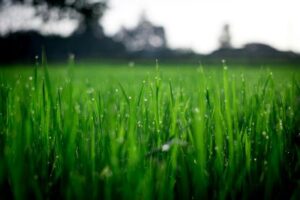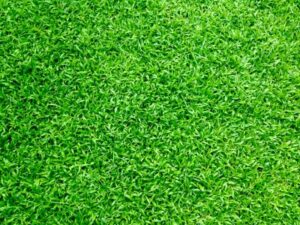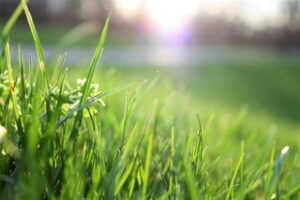How to Repair Patchy Areas in Your Lawn
On every lawn, thin or damaged parts can occasionally appear, disrupting its overall appearance. Damages can occur for various reasons, such as poor soil conditions, improper watering, fertilization, pests, or diseases. Quick response and repair of these uneven parts are crucial for maintaining a healthy and aesthetically pleasing lawn.
A well-maintained lawn contributes to the beauty and value of your home, creating a pleasant and orderly appearance of the outdoor space. Besides its aesthetic value, a tidy lawn provides a safe and comfortable place for rest and recreation.
Identifying the Causes of Patchiness in Your Lawn
Several different factors can lead to lawn damage:
- Poor soil conditions: Poor soil conditions include a lack of nutrients in the soil, improper pH level, or soil compaction that prevents airflow. These factors can hinder adequate root growth and reduce the grass’s ability to absorb water and nutrients from the soil.
- Inadequate watering: Both insufficient and excessive watering can negatively impact the appearance of the grass. Overwatering can lead to root rot, while insufficient watering can cause drying and brown spots in some lawn regions.
- Problems with pests and diseases: Insects, fungi, and other diseases can also damage the grass, making it weak or discolored.
- Excessive or insufficient fertilization: Improper fertilization can cause excessive weed growth and damage due to too many or too few nutrients.
- Shade and high traffic frequency: Parts of the lawn that are often in the shade or exposed to constant trampling struggle to maintain a healthy appearance. They look lifeless and trampled, and this problem can be solved by choosing varieties that tolerate these conditions well.

Tools and Materials Needed
To successfully repair damaged parts of the lawn caused by some of the factors mentioned, you will need some essential tools and materials. Here they are:
Lawn aerator: A lawn aerator is a device used to aerate the soil, improving the circulation of air, water, and nutrients to the roots.
Rake: You need rakes to remove dead parts of the grass, leaves, and other debris from the grass, especially during autumn and spring. With the help of rakes, you will also prepare the surface for sowing new seeds.
Quality seeds or sod: To repair lawn damage, choose seeds or sod suitable for the specific climate of your area, as well as general conditions. Also, if you are filling gaps in the existing lawn, choose the same grass variety that you initially used.
Fertilizer: Properly chosen fertilizer will provide the necessary nutrients to help the grass grow and strengthen. We advise you to select natural fertilizers that are not harmful to the environment. By simple composting, you can make organic, quality fertilizer by depositing fruit, vegetable, or eggshell waste in one place. It will decompose over time and create an extremely nutritious, natural fertilizer that will completely refresh the grass and its damaged parts.
Watering equipment: A watering system or hose is necessary for proper and even watering of sown areas, as they provide optimal conditions for seed germination and growth. Water is an indispensable item without which grass simply cannot survive.
Step-by-Step Guide to Repairing Patchy Areas
1. Soil Preparation
Soil preparation is crucial for the proper growth of healthy grass. Start by testing the soil pH to determine the level of nutrients. Based on the results, add the necessary nutrients using fertilizer on the damaged parts of the lawn.
Aerate and remove dead grass with rakes, then add a layer of compost or organic matter to improve the structure and enrich the soil.
2. Choosing the Right Seed or Sod
Choosing the right seed or sod for your conditions is a crucial step to achieve a lawn like those in perfect landscape photos.
Select seeds that match the general and climatic conditions of your area. Also, if you are filling holes in the lawn, choose the grass variety that grows in your yard so the new grass seamlessly blends with the existing one.
Consider conditions such as sunlight, shade, and traffic frequency in different parts of the lawn. This is important because there are specific grass varieties that better tolerate sun and drought and those that grow better in shade.
Also, choose quality seeds resistant to diseases and pests for a long-lasting and healthy lawn.

3. Sowing
Sowing grass involves evenly spreading seeds on the prepared soil to achieve a dense and healthy lawn. The best time for sowing is in the spring or fall when temperatures are favorable and there is enough moisture for germination and the growth of young plants.
After sowing, be sure to water the lawn regularly so the grass can take root.
4. Fertilizing
Use a fertilizer that suits the needs of your soil, which you can determine by simple soil testing.
Fertilizer with a balanced ratio of nitrogen, phosphorus, and potassium is usually recommended.
Apply fertilizer evenly across the lawn, using a spreader to avoid over-fertilizing in one spot.
Fertilize according to the grass’s seasonal needs, typically in the spring and fall when preparing the grass for winter.
5. Watering
Proper watering is crucial for the successful renewal of the lawn. First, lightly and evenly water the newly sown parts of the lawn to avoid creating puddles.
Maintain soil moisture, especially during the first few weeks, until the seed “takes.”
It is advisable to use a sprinkler system that evenly waters the grass. Don’t forget to water the healthy parts of the lawn, not just the newly sown areas.
6. Maintenance
After repairing the damaged parts of the lawn, it is essential to maintain regular maintenance practices to prevent future damage. Lawn care includes regular mowing, fertilizing, and inspecting the lawn.
Check the lawn regularly for damage, disease, or pests and take appropriate measures immediately if you notice problems.
Troubleshooting Common Problems
During the lawn repair process, some potential problems may arise. Regular monitoring and quick response can help maintain a healthy and lush lawn.
Improper watering: If your lawn is not properly watered, the seed may have problems with germination and growth. Therefore, soil moisture must be regularly monitored, and watering should be adjusted according to the needs of the newly planted grass.
Lack of sunlight: Insufficient sunlight is another reason that can lead to numerous problems. Therefore, if your yard is in the shade, it is important that you use a grass variety resistant to such conditions. If possible, remove sources of shade such as shrubs, umbrellas, or other garden furniture.
Problems with weeds: Weeds can “choke” new grass seedlings and prevent them from getting the nutrients they need for growth. Regular cleaning, hand weeding, and the application of herbicides are some of the ways that can help you control weeds and enable healthy grass growth.
Pest and disease attacks can damage newly sown parts of the lawn. Regularly monitor the situation on the lawn to react immediately when you notice the first signs of pests or diseases. In case of infection, apply the appropriate insecticide or fungicide to control the problem and prevent further damage.
Excess fertilizer can also damage the grass and negatively affect the health of the lawn. Therefore, carefully follow the fertilizer usage instructions and apply it according to the recommended amounts.

Additional Tips for Lawn Care
We have selected a few general tips for maintaining a lush, healthy lawn:
- Regular mowing: Mow the grass regularly, following the recommended height for your variety. Do not mow too low, as this can damage the roots.
- Aeration: Regularly aerate the soil to allow better air, water, and nutrient flow to the grassroots.
- Proper tool maintenance: Maintain your lawn tools. Sharpen the mower blades well so the grass does not tear while mowing, and keep your rakes from rusting.
- Different watering techniques are used in arid regions. One is the drip technique, which involves watering directly into the grassroots drop by drop. We also advise you to water the grass early in the morning or late in the evening during the summer to avoid unnecessary water evaporation. Of course, there is always one crucial ecological option: collecting rainwater that you can later use to water flowers and grass.
Conclusion
A healthy lawn provides a safe and comfortable place for rest and recreation, making it a valuable part of your home.
Therefore, with our advice, you should eliminate all lawn irregularities and enjoy its green shine.
